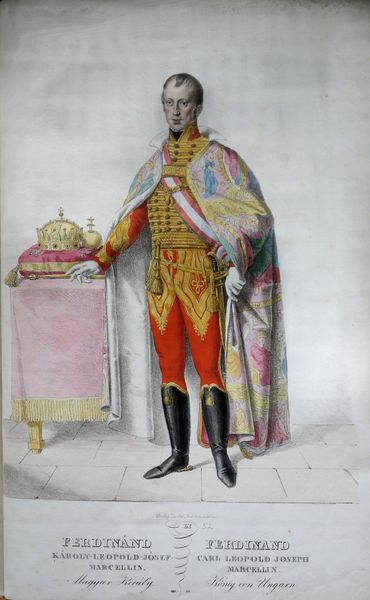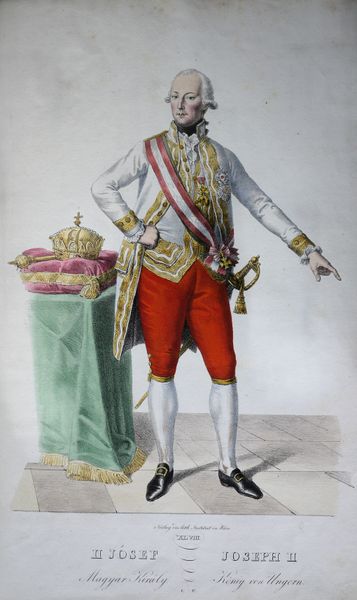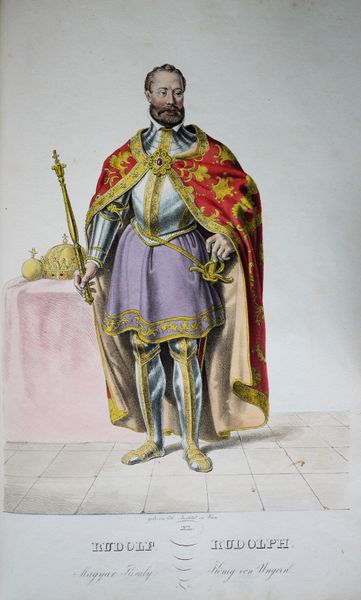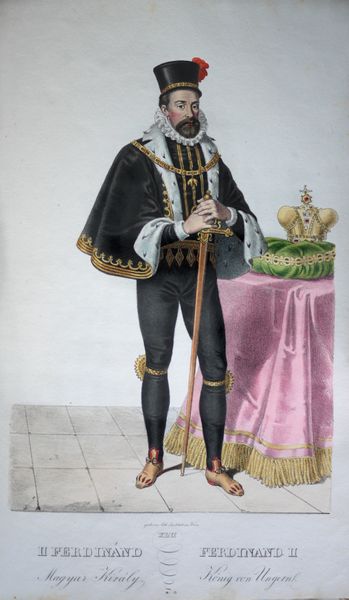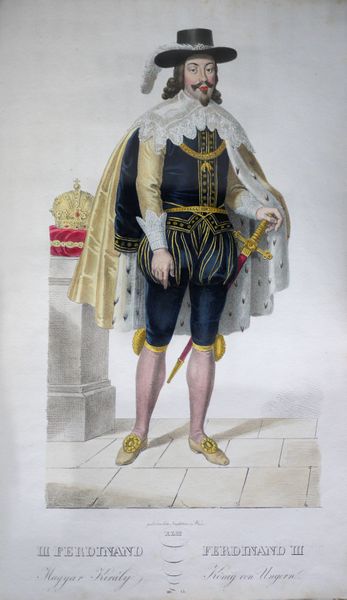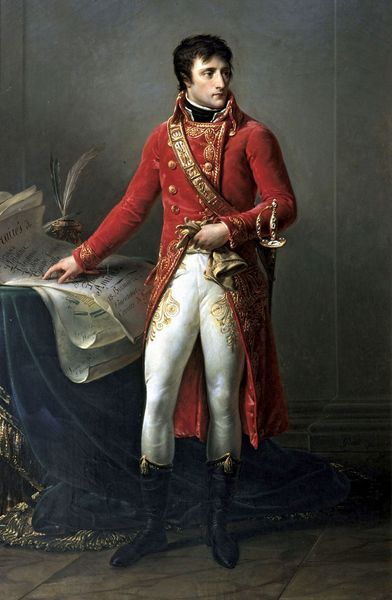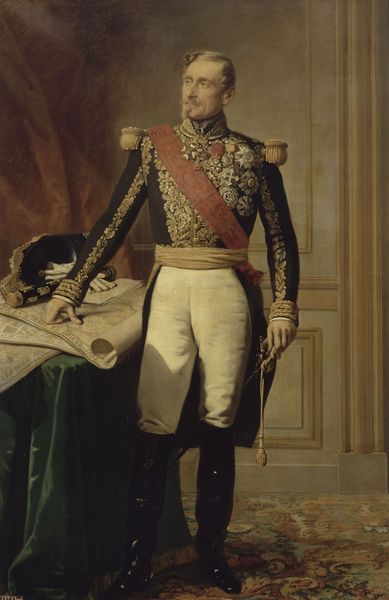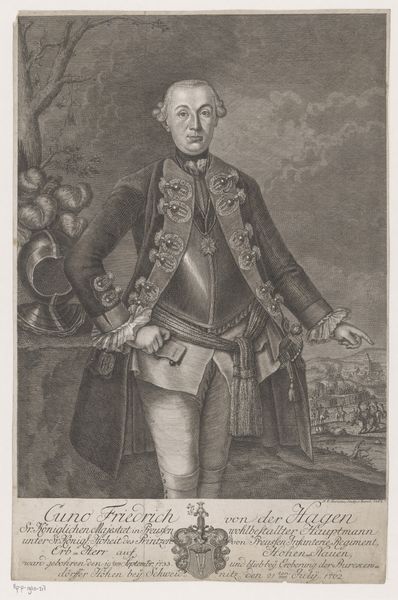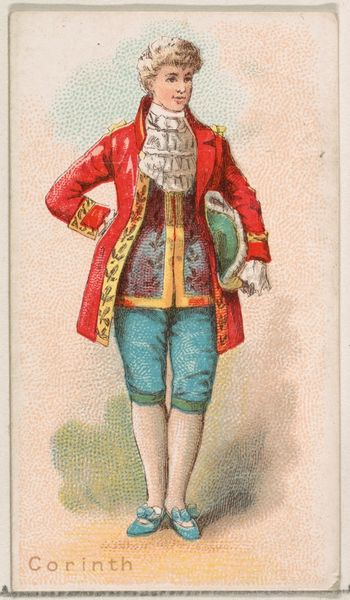
#
portrait
#
neoclacissism
# print
#
charcoal drawing
#
oil painting
#
portrait reference
#
portrait drawing
#
history-painting
#
portrait art
Copyright: Public domain
Editor: This is a portrait print of Leopold II by Josef Kriehuber. While undated, its style points towards the Neoclassical movement. The vibrant reds and golds of his attire contrast with his pale complexion and the cooler blues of his mantle. What's your interpretation of this work? Curator: It’s a fascinating piece because it offers us a glimpse into the construction of power and authority in the late 18th century. How does the artist use visual cues to communicate Leopold’s status? Think about the historical context: Leopold was Holy Roman Emperor, a title that carried significant political and cultural weight. Editor: Well, his attire, the crown, and the sword definitely signal power. The setting seems deliberately formal, reinforcing his status. Is there anything else about the time this was created that would give me insight into the intent of this portrait? Curator: Consider the Enlightenment ideals that were circulating at the time. On one hand, you have this opulent display of monarchy. Yet, the neoclassical style itself suggests a desire for order, reason, perhaps even an idealized version of leadership in contrast to the preceding baroque excess. What message was Leopold trying to convey in light of these cultural shifts? Was it effective? Editor: So, the portrait is more than just a likeness; it's a statement of political and cultural positioning? The artwork itself participates in politics. Curator: Precisely! The portrait is a form of propaganda. We must remember that artists like Kriehuber were often consciously or unconsciously participating in the politics of imagery. The image serves the interests of those who wield power, in this instance. Editor: This conversation really opened my eyes. I had only viewed this portrait as a representation of a ruler, but it really demonstrates how art acts as a historical and political tool. Thanks for that perspective! Curator: Indeed. Thinking about the public role of art allows us to see familiar images in new, complex, and historically situated ways. A single picture opens into broader reflections on history, and visual imagery becomes enmeshed with the broader, never-ending narrative of human political action.
Comments
No comments
Be the first to comment and join the conversation on the ultimate creative platform.



